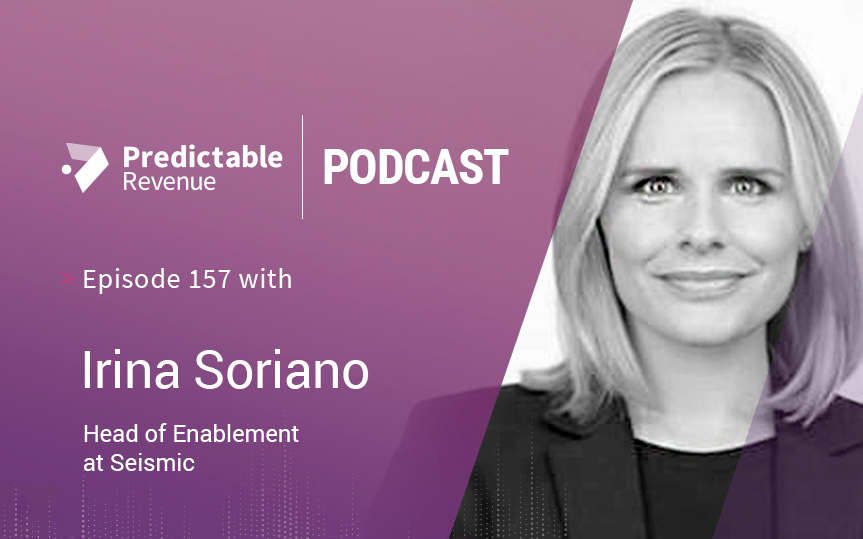How to Create an Enablement Team and Prove Its Return on Investment

There are so many pieces to a successful sales org: talented reps, a great product, strategic outreach, convincing messaging… I could go on forever.
And they all need to click to fuel that all-needed, all-important growth. I mean, what are sales teams chasing, if they’re not chasing growth?
Clearly, running a well-oiled sales machine is a juggling act. Every sales leader has to spin what feels like countless plates in order to keep their team marching in the same direction. But, beyond the product, the messaging, the cadences, and the well-trained reps is a critical piece of any great sales team: sales enablement.
Historically, it’s been a somewhat forgotten function in the sales world. But those days are changing. Sales enablement teams are having their well-deserved time in the sun.
And it’s about time.

Defining enablement
Any good celebration, of course, should start with a definition, for those unfamiliar with sales enablement.
So, first things first: what is sales enablement and what does a sales enablement team do?
According to Irina Soriano, Head of Enablement at Seismic, sales enablement handles three major planks for a company:
- Supporting sales with anything the team needs to be rockstars. This could be supporting new market launches, onboarding programs, or being a bridge to marketing…to name but three.
- Designing, developing, implementing, and also evaluating any sort of process that supports the sales team (hand-offs, demos, prospecting calls etc.)
- Managing the internal enablement tech stack (the company’s CRM, any learning tools, onboarding tools, and coaching software)
“In very simple terms, I would say that we are responsible to make sure that our sellers and our entire go to market team, have what they need at the right point in time to be rockstars at what they do,” says Soriano, on a recent edition of The Predictable Revenue Podcast.
That’s a lot of things, like making sure that our sellers and our go to market teams are able to tell the most compelling stories and have the most effective content they need at their fingertips, at the right point in time. We’re really a revenue driver for the organization. And we impact many, many things that helped to grow revenue for the company in general.
Where does enablement typically sit?
Okay, so, sales enablement is a broad, multidisciplinary function that incorporates sales, marketing, and go-to-market elements – among others. But, when a department is so sweeping in its scope, where does it sit? How does it fit in a company’s structure?
The short answer is… it depends on the company.
For example, at Seismic, sales enablement is part of the operations team. But, a sales enablement team could also be considered part of marketing, or sales. The key, however, regardless of where one decides enablement sits, is ensuring strong ties to all of the functions and teams that enablement supports.
So, sure, it could be considered operations. Or, it could be considered sales or marketing. But, no matter, what it needs to support all three.
“I’ve seen it done many different ways. You know, we can sit under operations. But, more and more, we could say we’re the marketing group, or sales. Those are probably the three places where I would recommend those looking to set up an enablement team place it,” says Soriano.
If you’re doing so from scratch, you really want to make sure it’s connected to the business. And there’s always going to be pros and cons with either decision, right? Ultimately, it depends on your preference. Just know there are options.
(Editor’s note: we had Scott Barker on the pod a while back to discuss his prospecting tips and tricks. You can read about our chat here, or listen to the whole in-depth interview here).
The charter
Okay, so, you’ve defined your enablement function. You’ve decided where you feel the team should sit in the organization. Now, how do you ensure enablement is actually providing value and following a coherent plan of attack?
At Seismic, Soriano drafts a charter that defines the priorities of the team, and clearly outlines which other functions enablement is explicitly supporting.
An issue enablement can often face and, unfortunately, succumb to, is firefighting. There’s always something to do, or a problem to fix, but if your enablement team is constantly patching immediate fixes or putting out fires they won’t be working with teams to strategically push the company forward.
So, what does an effective enablement charter define?
According to Soriano, a a good charter proves two things:
- That you are making an impact on the organization
- How you are working across the organization to build a robust enablement ecosystem
By defining these core concepts, says Soriano, you are clearly defining the value of enablement and showing that an investment in it provides returns. It’s also how you document and communicate the strategy to the rest of the team so the other in-the-trenches teams know what to expect from enablement.
“If you’re firefighting all year, you won’t be able to show anything at the end of the year, right? So that could potentially be a problem,” says Soriano.
And if you want to set up or really build an enablement ecosystem in your organization that can only happen with a plan or with a strategic approach. Remember, you are a connector point in the company – and that needs to be highlighted and understood. I see us as the connector in the company, rather than just a department.
To draft an effective charter – and get sign off on it from stakeholders across an organization – it’s important to include as many voices as possible. That means having executive leadership look at it and provide guidance, as well as sales, marketing, and go-to-market leaders.
“We sat with our executive enablement board to run through the charter to gather feedback to make sure we’re aligned with the organization,” says Soriano.
And then we took it a level down and set up calls with our go to market leaders to run them through the charter and really explain what it is we do. Finally, the last step was just to hop on a company all hands meeting present how enablement is moving forward. You can do the most wonderful things, but if you’re not telling anybody about it, it means nothing, right? A charter can just be a piece of paper that has no life to it. So make sure there’s action that follows and supports it, to ensure everyone understands and is aligned with where enablement is going.
For more on Soriano’s thoughts on enablement – including how to prove its RIO – check out the rest of her interview on The Predictable Revenue Podcast.
Do you have enough meetings to hit quota this summer? If you don’t, our social selling team might be able to help you out!
NO TIME TO READ?
Listen On:
Experience and a lot of testing have shown us that it is possible to create email templates that people actually resonate with.
You don’t have to figure it out alone, whether you’re starting off as a sales representative, looking to improve your game or providing your team with expert advice, we have your back!


